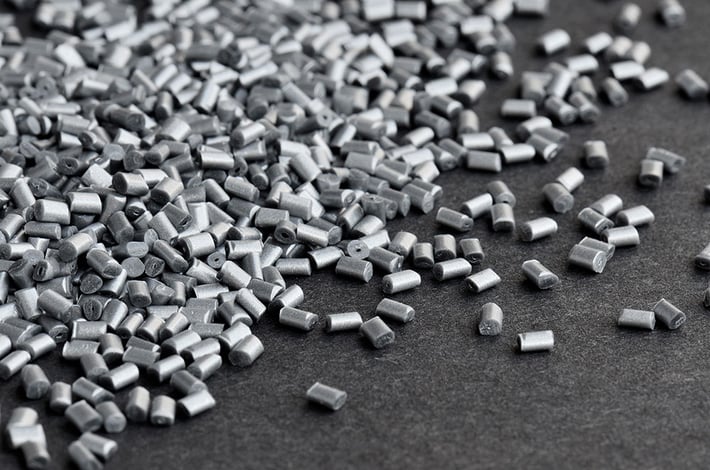
Electronic enclosures come in many different shapes, sizes, and structural designs. Used in an extremely wide range of applications, enclosures are also expected to withstand many different operational environments and use cases. That means there’s no one-size-fits-all solution to choosing the best plastic for manufacturing a custom enclosure: the optimum material is highly dependent on the specific application.
Nevertheless, one of the critical aspects of designing electronic enclosures for injection molding is selecting the right material for the job. That means careful consideration and comparison of all options to ensure the material meets your unique requirements in safety, durability, and heat resistance, as well as aesthetic considerations.
To help get the process rolling, we put together a quick guide to choosing the ideal plastic material for electronic enclosures in many different applications. If you want specific feedback on your project or further information on your material options, get in touch with the injection molding experts at AIM Processing.
Electronic Enclosure Materials Compared:
ABS Electronic Enclosures
ABS (acrylonitrile butadiene styrene) offers excellent impact strength along with electrical resistance – two crucial properties needed for most electronic enclosures. It’s also an economical and cost-effective material, making it extremely common throughout the modern electronics industry.A relatively lightweight and high-strength plastic, ABS can be ideal for many types of enclosures. The exception is for thin-walled designs, which may require a more durable plastic. For industrial enclosures, ABS offers resistance to many chemicals and solvents. It’s also easily colorable for custom designs and widely available. There are also grades to support flammability requirements if necessary for your electronic application.
Polycarbonate (PC) Enclosures
Polycarbonate (PC) is great for heavy-duty electronic enclosures due to its exceptional impact strength along with excellent thermal stability. PC is a great option for many industrial applications, as well as electronic enclosures for outdoor use in extreme weather climates although prolonged exposure sunlight UV may impair some of these properties in time. Additionally, it doesn’t offer chemical resistance like ABS and other options, making it unsuitable for other industrial uses.PC is a transparent material so it’s an ideal option for applications needing see-through plastics. For other applications, customized coloring can be added. Essentially, PC provides similar performance advantages to injection molded acrylics, but with even higher impact strength and better heat resistance.
ABS-Polycarbonate (ABS-PC) Enclosures
Can’t decide between ABS & PC? ABS-PC, as the name suggests, is a specialized combination of ABS and PC plastics. Essentially, this option gives you the enhanced impact resistance of polycarbonate (PC) with the resistance to chemicals and solvents that you get with ABS.
Because of those advantages, ABS-PC is commonly used in heavy-duty electronics enclosures – including industrial operations, medical equipment, and other use cases that require exposure to chemical cleaners and/or extreme heat. The material is also easily colorable, and is compatible with many performance-enhancing additives like impact modifiers and flame retardants.
PPE+PS (Polyphenylene Ether and Polystyrene) or PPO (Polyphenylene Oxide) Enclosures
A uniquely formulated blend of polyphenylene ether and polystyrene, PPE+PS and PPO plastics are durable, electrically resistant, UV resistant, and chemically resistant to many common solvents. It’s a common, cost-effective material for many commercial and industrial enclosure applications including transformer housings and relays. However, some mineral oils and organic solvents can cause the material to break down, limiting its industrial uses.
Acrylic Electronic Enclosures
Acrylic is less commonly used in specialized applications of electronic enclosures. Typically, it’s the choice material when a transparent, BPA-free material is needed – as many PC options contain BPA, as do some ABS materials. It’s not the most optimum material for most other applications because injection molded acrylic offers relatively poor impact strength in comparison to PC. While it may not be the main material in an enclosure, it may often be used for parts such as a display window.
How to Choose the Optimum Enclosure Material: Questions to Consider:
- Are you designing an indoor enclosure or an outdoor enclosure?
- For outdoor enclosures, how will the climate impact the material? (Consider extreme temperatures, temperature fluctuations, as well as rain, sleet, and other inclement weather.) Prolonged exposure to sunlight UV can impair the properties over time.
- Do you require specific types of chemical resistance or corrosion protection? (E.g. cleaning chemicals, industrial solvents, salt spray, etc.)
- What are the operational conditions and use cases? Will the device be subjected to harsh impacts or heavy wear?
- What are your aesthetic design requirements and color needs?
- Does your enclosure require radio transparency for wireless signal transfer? (E.g. Wi-Fi, Bluetooth.)
- Does your enclosure have any specific EMI/RF shielding requirements?
- Does your part require either a specific flammability rating?
Finding the Ideal Material Solution for Your Custom Molded Enclosures
There are numerous types of injection molded plastics optimized for electronic enclosures depending upon the specific application. At AIM Processing, our network of materials science experts and our production experience with thousands of products enables us to help you choose the best plastic option for your unique application.

 SINCE 1993 MADE IN USA
SINCE 1993 MADE IN USA 
